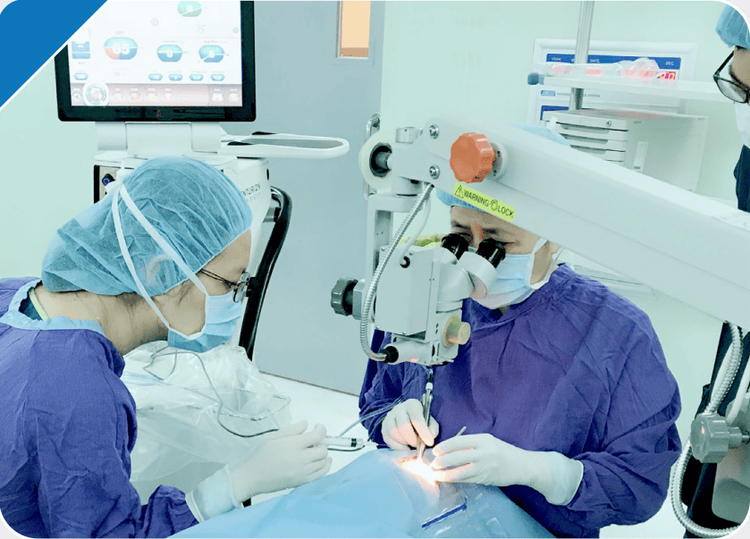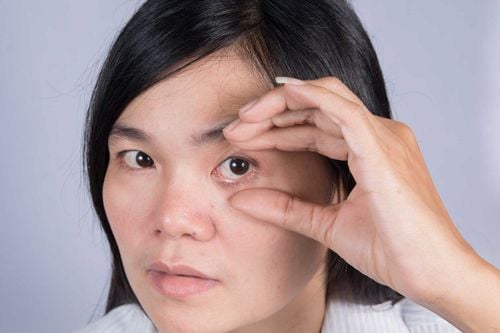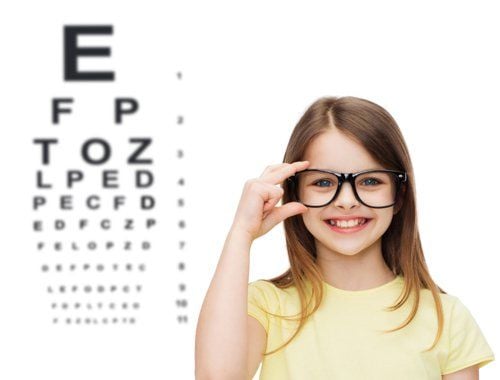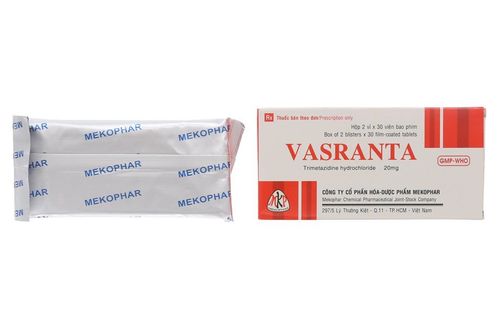This is an automatically translated article.
This article is professionally consulted by Master, Doctor Hoang Thanh Nga - Ophthalmologist - Department of Medical Examination and Internal Medicine - Vinmec Ha Long International General Hospital.The vitreous and vitreous are two completely different structures of the eyeball, many people confuse cataracts with cataracts as a disease. However, these are two completely different diseases, the prognosis and treatment methods are also completely different.
1. Is cataract and cataract the same disease?
1.1 Cataract The lens (also called the iris?) is a part located behind the iris that has a biconvex transparent lens. The lens does not contain blood vessels and nerves, so it nourishes by osmosis. The function of the lens is to regulate, let light pass through and focus on the retina to help us see things clearly.Cataract is a condition in which the protein in the lens changes structure, affecting the transmission of light for some reason. This condition results in the blurred lens becoming less transparent like a dimmed mirror, making it difficult for light to pass through the retina to become more blurred.
Because it is difficult for light to enter the retina, people with cataracts have reduced vision, blurred vision and risk of blindness.
1.2 Cataract The vitreous is a clear gel-like mass located just behind the lens and in front of the retina, the vitreous makes up 80% of the volume of the eyeball. The function of the vitreous is to transmit light rays from the outside to the retina, provide nutrients for the lens and retina, maintain pressure in the eye so that the retina does not tear and help focus images. more pronounced on the retina.
Cataract is caused by deposition or condensation in the vitreous, the deposited part is suspended in the vitreous, causing the patient to see cloudy and floating images in the eye.
Thus the lens and vitreous are two completely different parts and have different functions in the eyeball. Cataracts and cataracts are two completely different diseases that are often caused by an aging eye condition. The two diseases have different prognosis and different treatment methods.
2. How to distinguish the symptoms of cataracts and cataracts
To distinguish these two diseases can be based on clinical signs, eye examination.Signs of cataracts:
Vision loss is the most typical and important sign in cataracts. Blurry vision or eyestrain when focusing on an object. Blurry vision feeling like a veil in front of the eyes More sensitive to light, often dazzled. It is often more difficult to see in bright light than in shade. Double vision, looking at an object into many different images. There is a phenomenon of flying flies, black dots or black spots appearing in front of the eyes. Symptoms may be seen in both eyes or one eye. Eye examination shows that the lens is no longer transparent, but opaque and opaque. Signs of vitreous opacity:

Dấu hiệu đục dịch kính
Move when changing direction, if you try to look at them, they will move faster out of sight. These black streaks will be noticeable when looking at a blank bright background, such as a blue sky or a white wall. When lying down, these clouds tend to fall to the bottom of the eye, falling closer to the macula, so it is easier to see. These points are usually hovering and tend to move according to gravity. Tends to disappear when focused on them. It usually doesn't go away but will subside over time. There may also be symptoms such as blinking eyes, decreased peripheral vision, and tubular vision.
Eye exam will show cloudy condition of vitreous.
Thus, both diseases show signs of flying flies: The difference of this sign is
If there is a phenomenon of the fly standing still, moving only when the patient glances, it is a sign of cataracts. If the fly is still flying even though the eye is still and does not move, it is cloudy. In some cases, patients after vitreous replacement surgery see more severe flies, usually this condition is caused by cataracts. Because there was a cataract in the past, the amount of light that entered was not much, so the cloudy state of the vitreous could not be clearly seen. During surgery to replace the artificial lens, more light enters the vitreous cavity, so these vitreous cloudings appear more clearly and more.
However, not only cataracts and cataracts appear flies, this condition is also seen in retinal tear or detachment, which if not treated in time can lead to blindness. Therefore, it is not possible to rely on this symptom to self-diagnose the disease.
3. Prognosis and treatment methods for cataracts, vitreous opacities

Phẫu thuật thường được chỉ định để giải quyết tình trạng đục thủy tinh thể
Vinmec International General Hospital is one of the hospitals that not only ensures professional quality with a team of leading medical doctors, modern equipment and technology, but also stands out for its examination and consultation services. comprehensive and professional medical consultation and treatment; civilized, polite, safe and sterile medical examination and treatment space.
With 10 years of experience in the field of Ophthalmology, she used to work at Thai Nguyen Central Hospital and held the position of deputy head of the department and in charge of the Department of Ophthalmology at Thai Nguyen University of Medicine and Pharmacy. Master Hoang Thanh Nga has a lot of experience in the field of examination and treatment of eye diseases. Currently, he is an Ophthalmologist at the Department of General Internal Medicine, Vinmec Ha Long International General Hospital.
Please dial HOTLINE for more information or register for an appointment HERE. Download MyVinmec app to make appointments faster and to manage your bookings easily.













